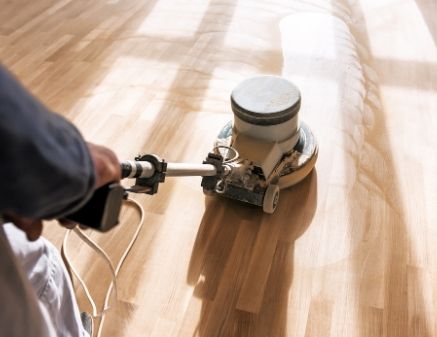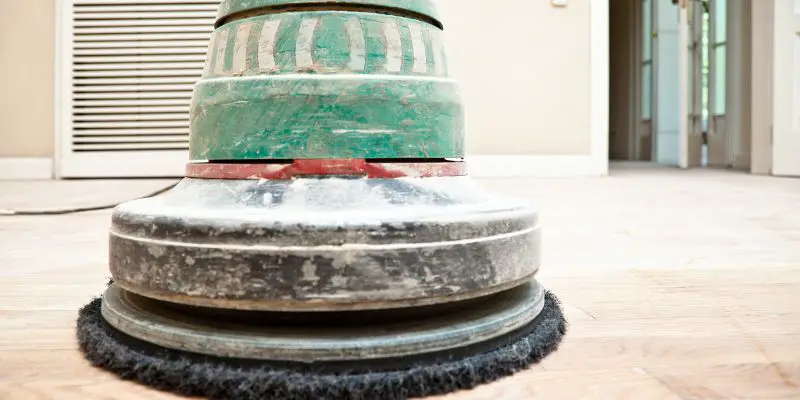Yes, it is possible to change the color of hardwood floors.
Benefits Of Changing The Color Of Hardwood Floors
Changing the color of your hardwood floors can have a significant impact on the overall aesthetic and feel of your space. Whether you’re looking to modernize your home or personalize it to fit your unique style, altering the color of your hardwood floors offers several benefits that can transform your living space.
Enhances The Aesthetic Appeal
Changing the color of your hardwood floors can instantly revamp the look and feel of your entire room. By updating the color, you have the ability to transform a room from traditional to contemporary or from dark and moody to light and airy. A shift in color can create a whole new visual experience and elevate the overall visual appeal.
Allows For Personalization
One of the most significant benefits of changing the color of hardwood floors is the ability to personalize your space. By selecting a specific shade, you can express your individual style and create a unique atmosphere that reflects your personality. This customization allows you to tailor the flooring to your preferences and make it distinctly yours.

Credit: www.fromtheforest.com
Factors To Consider Before Changing The Color
Before changing the color of hardwood floors, it’s essential to consider factors such as the type of wood, current condition, and desired outcome. By evaluating these aspects, you can make an informed decision that ensures a successful and satisfying result.
Condition Of The Hardwood Floors
Before diving into a hardwood floor color change project, it’s important to assess the condition of the existing floors. If your hardwood floors are worn, scratched, or damaged, the color change process may not yield the desired results. In such cases, it is recommended to refinish or repair the hardwood floors before attempting to change the color.
Type Of Hardwood Flooring
The type of hardwood flooring you have is another crucial factor to consider before embarking on a color change. The ability to change the color of hardwood floors largely depends on the type of wood and its natural characteristics. Certain hardwood species, like oak and maple, accept stains more easily than others. If you have an exotic or less common wood species, it’s advisable to consult with a flooring professional to determine if changing the color is a viable option.
Budget Considerations
Changing the color of hardwood floors can vary in cost depending on the size of the project and the complexity of the desired color change. Factors that may affect the budget include the extent of repairs or refinishing needed, the type of stain or finish used, and whether the project is DIY or requires professional services. It’s essential to set a realistic budget and consider all associated costs, such as sanding, staining materials, sealants, and labor, to ensure a successful and satisfactory outcome.
Process Of Color Changing Hardwood Floors
Yes, you can change the color of hardwood floors through a process called refinishing. This involves sanding down the existing finish, staining the wood with the desired color, and applying a new protective finish. Professional contractors can ensure a successful color change while preserving the quality of the hardwood.
Process of Color Changing Hardwood Floors
Changing the color of your hardwood floors can be a transformative process that breathes new life into your space. Whether you’re looking to update the look of your home or want to personalize your floors to match your style, the process of color-changing hardwood floors involves a few key steps: surface preparation, stain application, and finishing techniques.
Surface Preparation
Before you can delve into the exciting world of color changing, it’s important to prepare your hardwood floors properly. Surface preparation ensures that the stain adheres evenly and creates a beautiful, long-lasting finish.
There are a few essential steps involved in surface preparation:
- Clean the floors: Begin by thoroughly cleaning your hardwood floors to remove any dirt, dust, or debris. This can be done with a high-quality hardwood floor cleaner and a microfiber mop or cloth.
- Sand the floors: Sanding is an integral part of surface preparation as it removes the existing finish and creates a smooth surface for the new stain. Use a drum sander, edge sander, and hand sander to achieve a consistent finish across the entire floor.
- Remove dust: After sanding, it’s crucial to remove all dust from the surface. Use a vacuum cleaner and tack cloth to ensure that no dust particles are left behind, as they can interfere with the stain application.
Stain Application
Once your hardwood floors are properly prepared, it’s time to apply the stain. Stain application is the stage where you can get creative and choose the color that matches your vision for the space. There are various types and shades of stains available, giving you plenty of options to achieve the desired look.
Here’s how to successfully apply stain to your hardwood floors:
- Test the stain: Before applying the stain to the entire floor, it’s essential to test it on a small inconspicuous area. This allows you to see how the color will appear on your specific wood type and determine if any adjustments are needed.
- Apply the stain: Using a brush, applicator pad, or cloth, apply the stain evenly across the floor. Work in small sections to ensure that the stain doesn’t dry before you’re able to blend it in properly.
- Wipe off excess: After applying the stain, use a clean cloth to wipe off any excess product. This helps to achieve an even finish and prevents blotching.
Finishing Techniques
To protect and enhance the color of your newly stained hardwood floors, finishing techniques are essential. The finishing layer adds durability and depth to the floors while providing a protective barrier against wear and tear.
Consider these key finishing techniques:
- Polyurethane application: Polyurethane is a popular choice for finishing hardwood floors as it offers excellent protection and durability. Apply multiple coats of polyurethane, allowing each coat to dry completely before applying the next.
- Sanding between coats: To achieve a smooth and flawless finish, lightly sand the floors between each coat of polyurethane. This helps to remove imperfections and ensures proper adhesion of subsequent coats.
- Buffing and polishing: After the final coat of polyurethane has dried, use a buffer or polisher to bring out the shine and luster of your newly colored hardwood floors.
Through surface preparation, stain application, and finishing techniques, you can successfully change the color of your hardwood floors. This process allows you to customize your living spaces and create a warm and inviting ambiance that truly reflects your personal style. Enjoy the transformation as your floors become a stunning focal point in your home.
Popular Colors For Transformed Hardwood Floors
When it’s time to breathe new life into your hardwood floors, the color transformation can make a world of difference. With a wide array of choices, homeowners can reinvent their living space with stunning new hues. Let’s explore the popular colors that can transform the look of your hardwood floors.
Dark And Rich Tones
Dark and rich tones such as mahogany, espresso, and walnut bring a sense of luxury and sophistication to any room. These deep colors add warmth and opulence to the space, creating a timeless and elegant ambiance.
Light And Natural Shades
Light and natural shades like oak, maple, and hickory offer a fresh and airy vibe to your interior. These light-toned floors can make a room feel more spacious and bright, ideal for creating a welcoming and comfortable atmosphere.
Gray And Whitewashed Finishes
Gray and whitewashed finishes have gained popularity for their modern and versatile appeal. These contemporary colors can impart a sense of airiness and can complement various interior styles, from rustic to contemporary.
Maintenance And Care Tips For Transformed Hardwood Floors
Transforming the color of hardwood floors is possible with professional techniques. Ensure their longevity by following maintenance and care tips for the newly transformed hardwood floors.
When you decide to change the color of your hardwood floors, it’s important to remember that they still require regular maintenance and care to keep them looking their best. With proper upkeep, your transformed hardwood floors will continue to radiate beauty and elegance throughout your home. In this post, we will share some essential tips to help you maintain and care for your newly colored hardwood floors.
Regular Cleaning
One of the key aspects of maintaining your transformed hardwood floors is regular cleaning. Dust, dirt, and other particles can accumulate on the surface, making your floors look dull and worn out. To prevent this, implement a regular cleaning routine that includes:
- Sweeping or vacuuming your floors daily to remove loose dirt and dust.
- Mopping your floors with a specially formulated hardwood floor cleaner that is safe for your newly colored floors. Avoid excessive moisture that can damage the wood.
Avoiding Direct Sunlight
Direct sunlight can cause your beautifully transformed hardwood floors to fade over time. The UV rays from the sun can penetrate the wood’s surface, altering its color and diminishing its vibrancy. To protect your floors from this, consider:
- Using curtains, blinds, or window films to block or reduce direct sunlight exposure in rooms with hardwood floors.
- Moving furniture and area rugs periodically to prevent uneven fading and discoloration.
Using Protective Mats
Another essential tip for maintaining your transformed hardwood floors is to use protective mats in high-traffic areas. These mats act as a barrier between your floors and potentially damaging elements, such as dirt, moisture, and scratches. Consider the following:
- Place mats at entryways to trap dirt and grit that may be tracked onto your floors.
- Use felt pads or rubber protectors under furniture legs to prevent scratches and dents.
By following these maintenance and care tips, you can ensure that your transformed hardwood floors remain beautiful and vibrant for years to come. Remember to establish a regular cleaning routine, protect your floors from direct sunlight, and use protective mats in high-traffic areas. With proper care, your newly colored hardwood floors will continue to enhance the aesthetic appeal of your home.

Frequently Asked Questions Can You Change The Color Of Hardwood Floors
How Much Does It Cost To Change The Color Of Wood Flooring?
The cost of changing the color of wood flooring varies. It depends on factors like the type of wood, the size of the area, and whether you hire professionals or do it yourself. Generally, prices can range from $1,000 to $5,000.
Is It Easy To Change The Color Of Hardwood Floors?
Yes, it is easy to change the color of hardwood floors using wood stains or dyes. Sanding the floor and applying the new color is the process involved. This can be easily done by a professional or for DIY enthusiasts with proper instructions.
Can I Change The Color Of My Hardwood Floors Without Sanding?
Yes, you can change the color of your hardwood floors without sanding. There are methods like using wood floor stains or dyes to achieve the desired color. These products can be applied directly to the existing floor finish, saving you from the hassle of sanding.
How Much Does It Cost To Change Wood Color?
The cost of changing the color of wood varies depending on factors like the type of wood, the size of the project, and the level of expertise needed. It’s best to consult with a professional for a precise quote.
Conclusion
Changing the color of hardwood floors is indeed possible and can be achieved through various methods. Whether you choose to stain, bleach, or refinish the floors, each option offers a unique way to transform the appearance of your wooden flooring.
With proper care and maintenance, your newly colored hardwood floors can enhance the aesthetic appeal of your space for years to come. Make sure to consult with professionals and consider your personal preferences before making any changes to ensure the best results.



2 thoughts on “Can You Transform Your Hardwood Floors with a Color Change?”